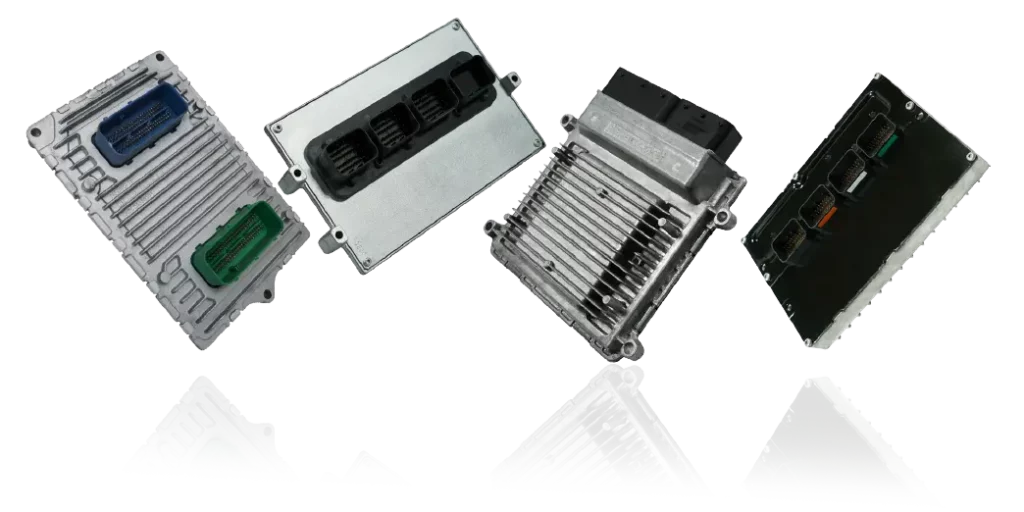Frequently Asked Questions
Find topics by entering terms in the search box.
Table of contents
What is a TIPM?
TIPM stands for "Totally Integrated Power Module." It is a computer module in a vehicle that manages and controls the power distribution and electrical functions in the vehicle. It is sometimes referred to as the "fuse box" or "power distribution center." The TIPM is responsible for controlling and distributing power to various systems in the vehicle, such as the headlights, interior lights, wipers, and fuel pump. It may also contain circuits for other electrical components, such as the starter motor, alternator, and electronic control modules.
Do the letters at the end of the part number matter?
The two letters at the end are just a date stamp of when the part was built. All that matters are the actual digits for most vehicles. In some circumstances, they do matter for 2006 – 2011 Dodge Dakota, and Power Distribution Centers (PDCs) for 2014 and newer Chrysler 200, Pacifica & Jeep Cherokee Vehicles.
Do you buy TIPM Cores?
We are always looking out for cores. If you have any please feel free to reach out to 818-798-5558 or feel free to email us at (ely@tipmrebuilders.com). See https://www.tipmbuyers.com/ for the types of TIPMs we buy. See this link for our Core Buyback Program.
What Vehicles you currently support.
We currently service Chrysler, Dodge, Jeep & RAMs products at the moment and will plan to expand to more Brands soon.
What is a Vehicle Identification Number (VIN)?
A Vehicle Identification Number (VIN) is a unique 17-character code that is used to identify individual motor vehicles. It is typically composed of a combination of letters and numbers, and it is assigned to a vehicle when it is manufactured. The VIN is used to track and identify vehicles for various purposes, such as registration, insurance, and maintenance. It is usually located on the dashboard, on the driver’s side door jamb, or in the engine compartment of a vehicle. In some cases, it may also be found on the vehicle’s title or registration documents. The VIN can be used to determine a vehicle’s make, model, year, and other important information.
Where can I locate my VIN?
You can typically find the Vehicle Identification Number (VIN) on the dashboard of your vehicle, on the driver’s side door jamb, or in the engine compartment. The VIN is often etched into the metal of the vehicle and is visible through the windshield on the driver’s side. It may also be located on the vehicle’s title or registration documents.
If you are having trouble finding the VIN on your vehicle, you can try looking for it in the following places:
On the dashboard: The VIN is often visible through the windshield on the driver’s side of the vehicle. It may be located on the dashboard near the base of the windshield or on the driver’s side of the dashboard.
On the driver’s side door jamb: The VIN may be located on a metal plate or sticker on the driver’s side door jamb.
In the engine compartment: The VIN may be located on a metal plate or sticker in the engine compartment, often near the firewall or on the top of the engine block.
On the vehicle’s title or registration documents: The VIN may be listed on the vehicle’s title or registration documents.
If you are still unable to locate the VIN on your vehicle, you may want to refer to your owner’s manual or contact the manufacturer for assistance.
Where can I find the part (service) number for my vehicle’s computer (PCM, ECM, ECU)?
The part number for your vehicle’s computer, also known as the Powertrain Control Module (PCM), Engine Control Module (ECM), or Engine Control Unit (ECU), may be located on an identification sticker or tag on the computer itself. This sticker or tag should contain important information about the computer, including its part number.
If you’re looking for the right PCM/ECM for your vehicle, it may be overwhelming with the numerous choices available. To avoid any potential problems such as module failure, shorts, and drivability issues, it’s crucial to get the correct replacement for the OE module in the car. While the VIN number can be helpful to narrow down options, it may not identify the specific replacement part number required. To determine the appropriate ECM/PCM part number, you need the original equipment (OE) part number, which can be found on a sticker or stamped into the casing of the original PCM/ECM. You can reference these numbers on our website to identify the right match.
You can typically find the computer on your vehicle by looking for it in the engine compartment. It is usually located near the firewall or on the top of the engine block. If you are having trouble finding the computer, you may want to refer to your owner’s manual or contact the manufacturer for assistance.
Ford part numbers will include “12a650” in the body of the original equipment part number printed on a sticker on the unit.
GM part numbers will often be referred to as a “service number” printed on a sticker on the unit.
Chrysler part numbers will start with at “P” or a “PN” and like Ford and GM, will be printed on a sticker on the unit.
In addition to the identification sticker or tag, the part number for your vehicle’s computer may also be listed in the owner’s manual or on the manufacturer’s website. You can also try contacting a dealership or mechanic to see if they can help you locate the part number. If you are still unable to locate the part number, you may need to remove the computer from the vehicle to find it.
What does "Plug & Play" mean?
"Plug & Play" refers to the ability of a device or system to be easily installed and configured for use without requiring advanced technical knowledge or extensive setup procedures. In the context of electronic devices, "plug & play" typically refers to the ability to simply connect the device to a power source and a computer or other host system using a standard interface, such as a USB port, and have it automatically recognized and configured by the system.
For example, a "plug & play" USB device is one that can be easily connected to a computer and used without the need to install any additional drivers or software. Similarly, a "plug & play" computer system is one that can be easily set up and configured without requiring the user to manually install drivers or configure system settings.
The term "plug & play" is often used to describe devices and systems that are designed to be user-friendly and easy to install and use, especially for individuals who may not have a lot of technical knowledge or experience.
What does "Programmed & Updated" mean?
"Programmed & updated" typically refers to the process of installing or modifying software or firmware on a device or system in order to add new features, fix bugs or issues, or improve performance. This process usually involves creating or modifying code and then uploading it to the device or system in question.
For example, a device that has been "programmed & updated" may have had new software or firmware installed on it, or the existing software or firmware may have been modified to add new features or fix issues. Similarly, a computer system that has been "programmed & updated" may have had new software installed or existing software modified in order to improve performance or add new features.
In general, "programming" refers to the process of writing or modifying code, while "updating" refers to the process of installing or uploading new or modified code to a device or system. The term "programmed & updated" is often used to describe devices and systems that have been modified or enhanced in some way through the installation or modification of software or firmware.





